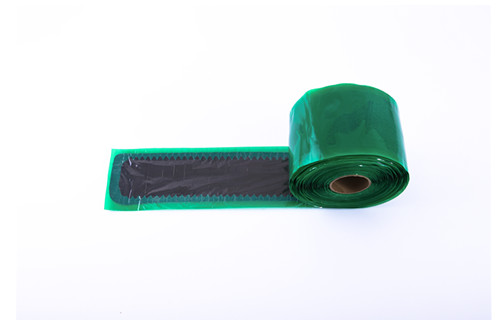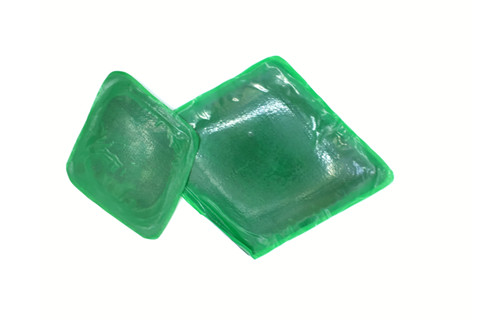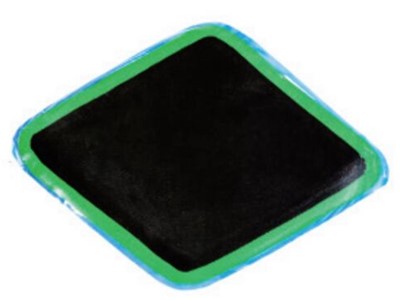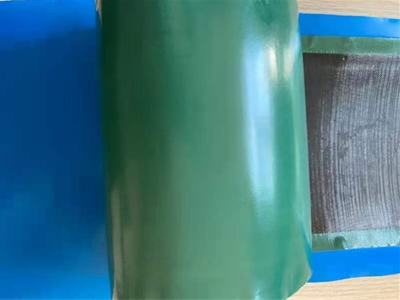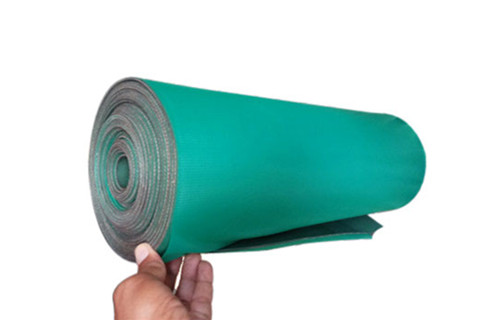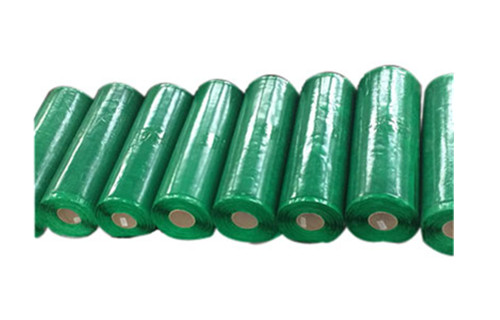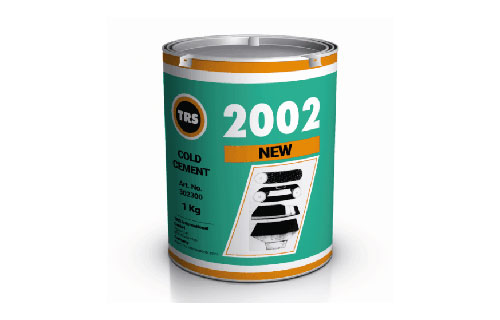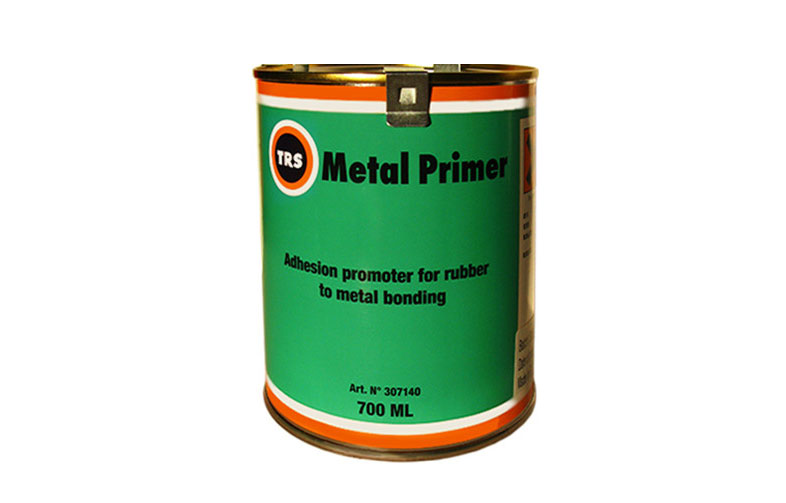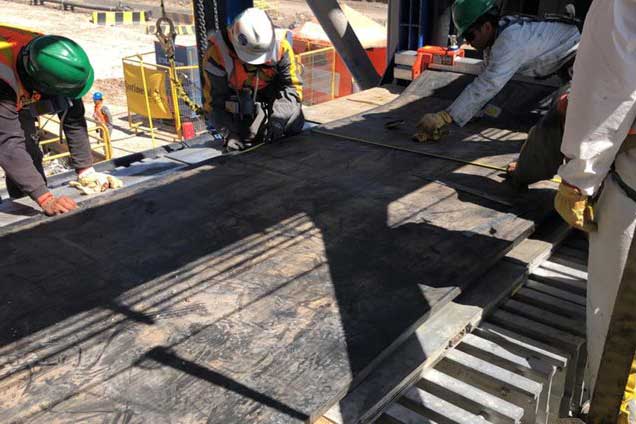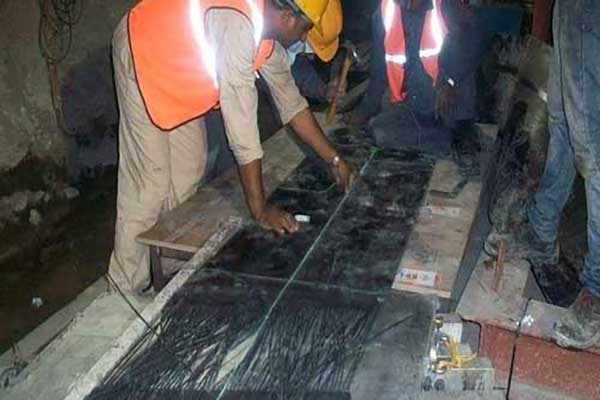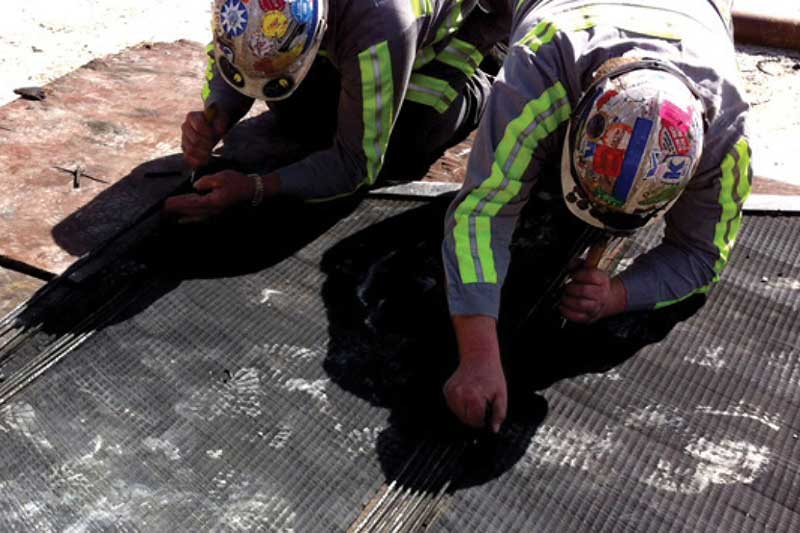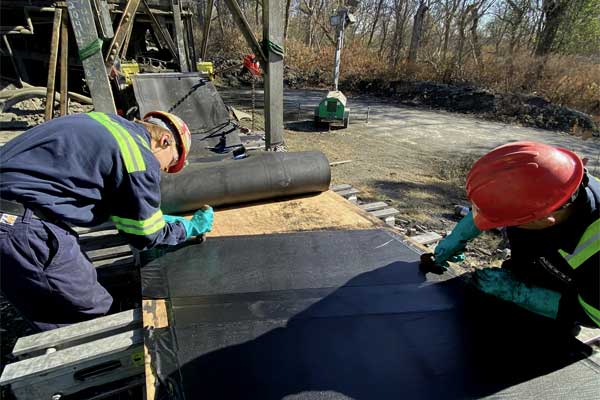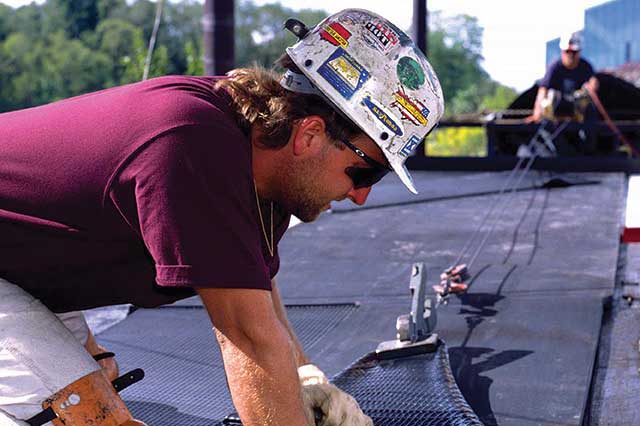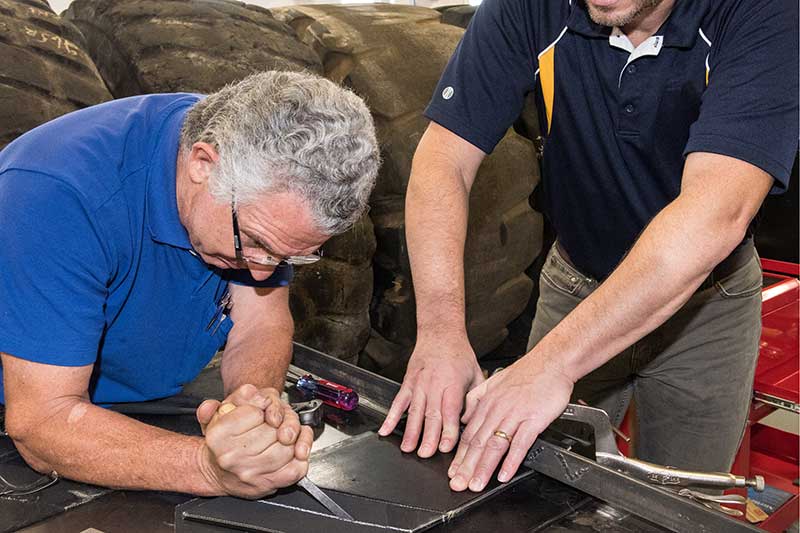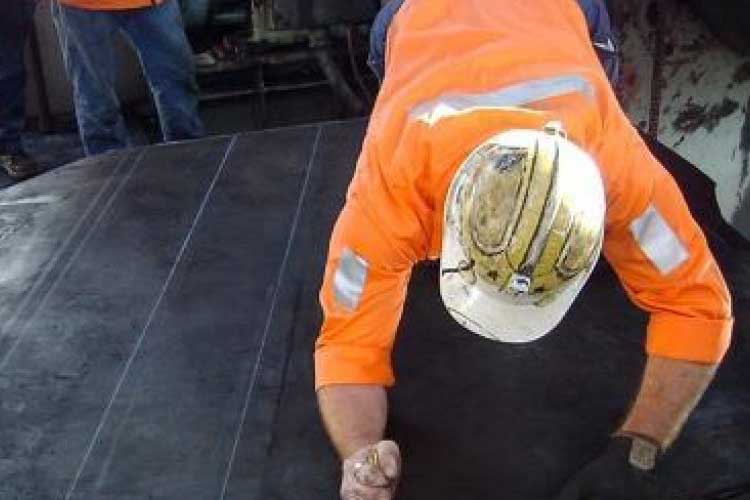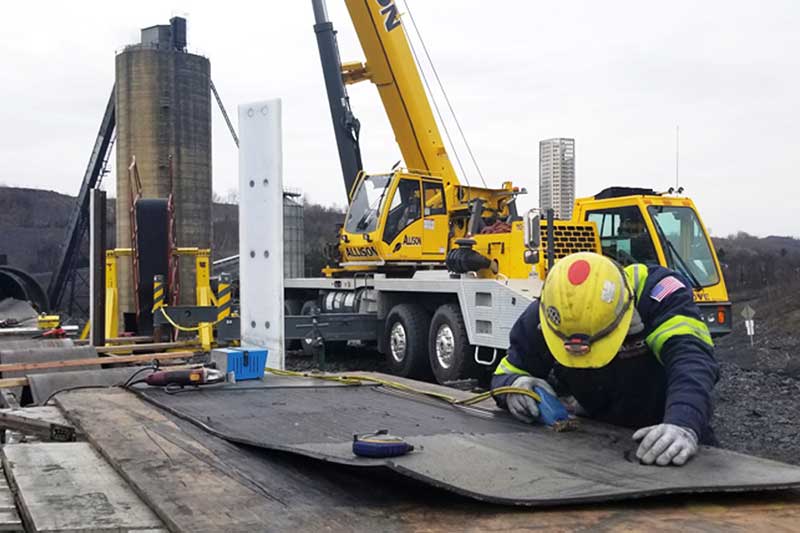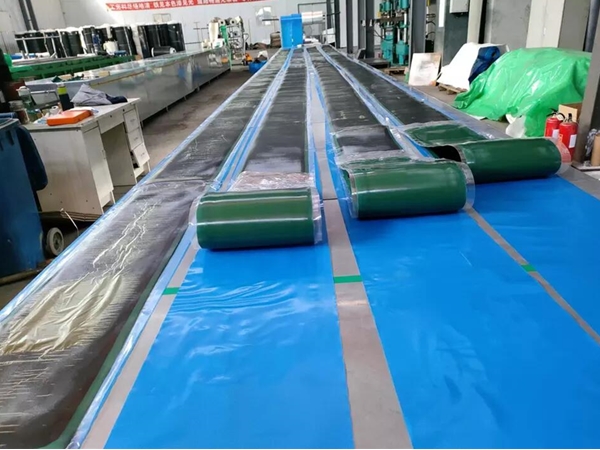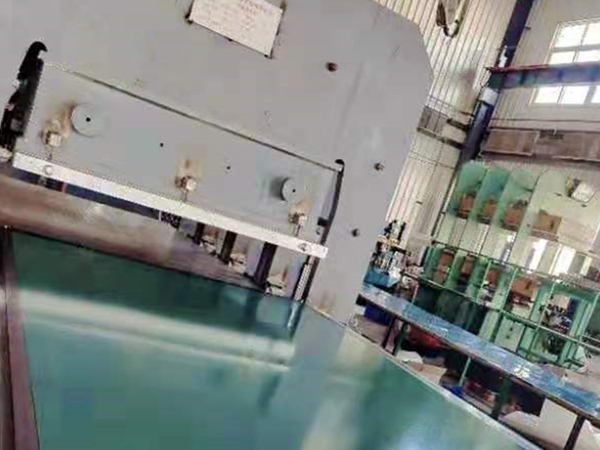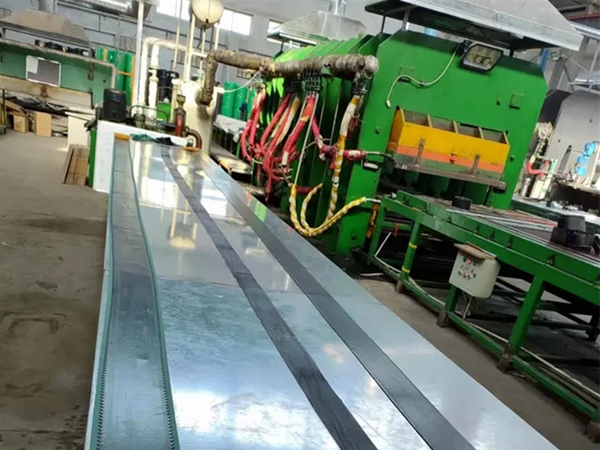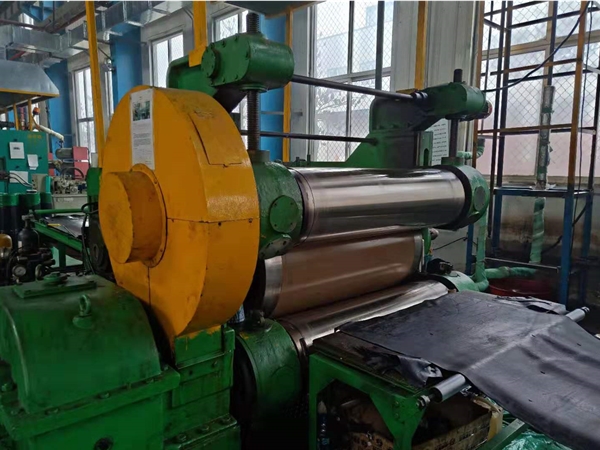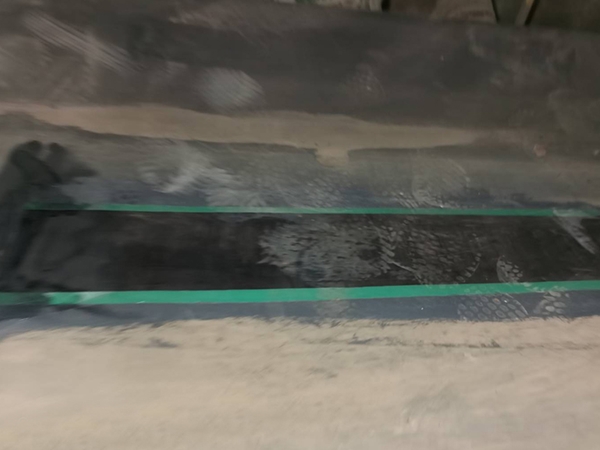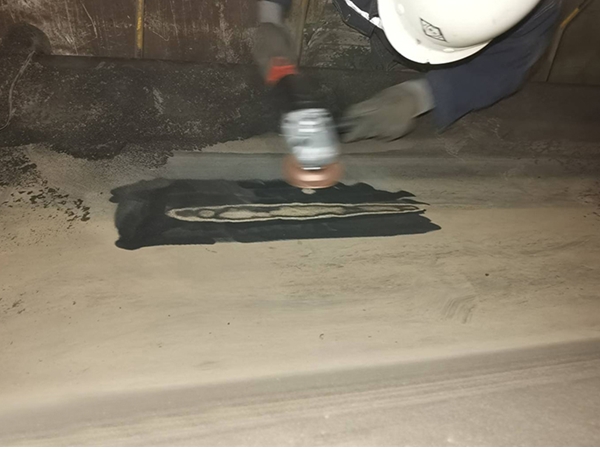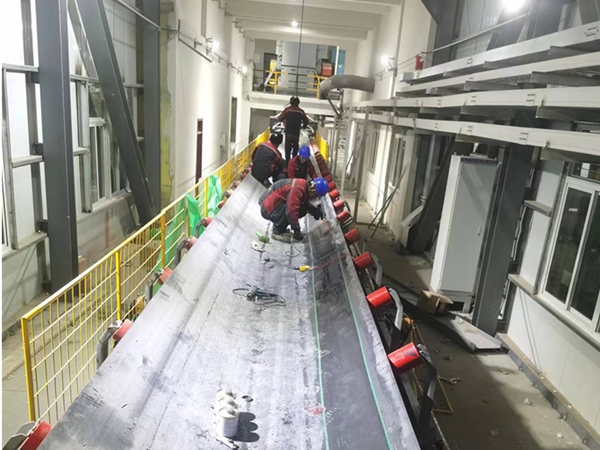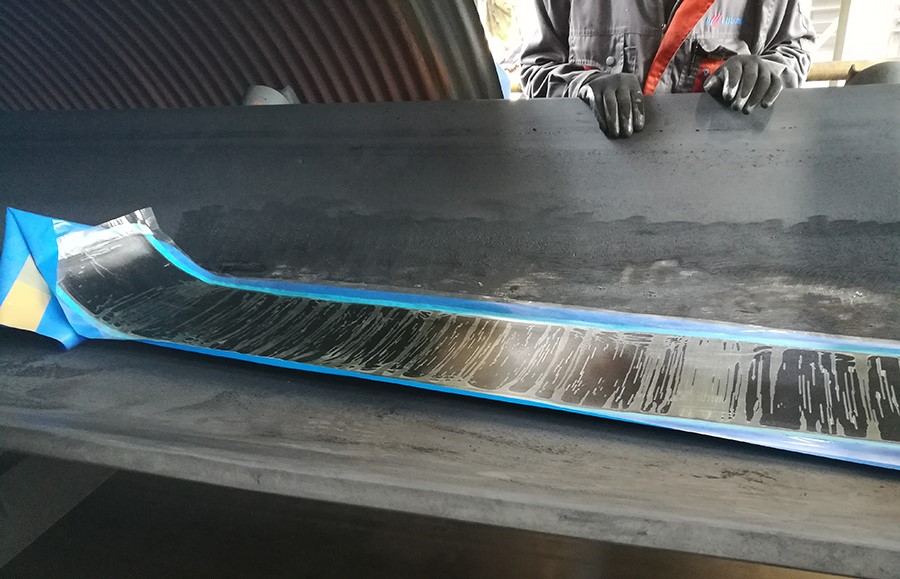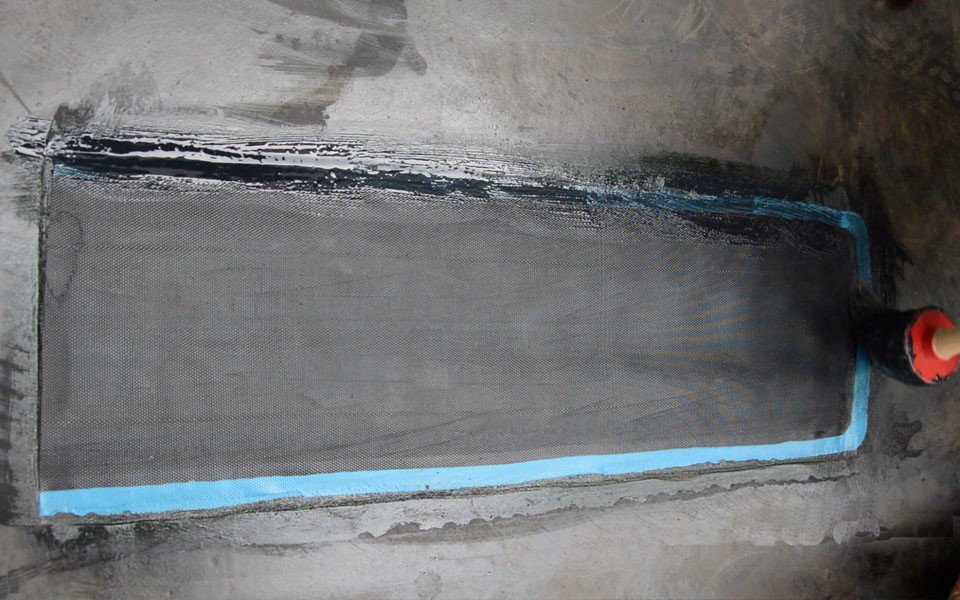Featured Cold Bond Repair Materials
Beltcare Solution provides a full range of high-quality conveyor belt repair materials, which includes conveyor belt repair tape, repair patches, repair rubber with bonding layer on two sides, cleaning solvent, and cold vulcanizing cement.
Cold Bond Repair Material – Definitive Guide
In the following guide, you will know everything about Cold Bond Repair Material.
During the bulk material conveying of the belt, various damages may occur due to material dumping, falls, such as longitudinal tearing, edge damage, gouged, deep punctured, and so on. For these questions, we need to evaluate whether the belt is repaired or replaced.
If the fabric conveyor cover rubber wear is near the limit, the tear is more than 7 points per meter length, the horizontal puncture reaches 1/3 of the belt width, it needs to replace the damaged part with a new conveyor belt. However, most of the damages can be repaired by cold vulcanization repair.
[lwptoc skipHeadingLevel=”h1″ skipHeadingText=”*Beltcare Solution- Conveyor Belt Cold Joint Solution Provider|*Multiple Cold Vulcanizing Kit For Your Choose|*Cold Vulcanizing Solution FAQ|*Cold Vulcanizing Solution – Definitive Guide|*Cold Vulcanizing Cement|*Cleaning Solvent|*Standard Conveyor Belt Repair Strip|*Reinforced Diamond Repair Patch|*Diamond Belt Repair Patch|*Fabric Reinforced Belt Repair Strip|*Conveyor Repair Fabri|*CN Filler Rubber|*Project|*Factory|*Conveyor Belt Repair Company FAQ|*Are you a trader or manufacturer?|*Can I get samples to test? How does it charge?|*What is your return policy?|*What’s the lead time after we placed the official PO?|*Can you use our company logo or label?|*Which kind of certificate do you have?|*Cold Bond Repair Material – Definitive Guide|*Send Your Inquiry Today!”]
What is Cold Bond Repair Material?
The material using in cold vulcanization repairing is called the cold bond repair material, it usually includes conveyor belt repair strips, fabric-reinforced repair strips, CN Filler repair material, cold vulcanizing adhesive, etc. With the conveyor belt repair strips, you can make your conveyor belt work again in as little as one hour.
Conveyor Belt Repair Strips
Conveyor belt repair strip is also called conveyor belt repair band or rubber repair patch or rubber rectangular repair patch, it can be divided into standard repair strips, fabric-reinforced repair strips, diamond repair patches, and CN Filler Repair Materials.
They are made of synthetic rubber, which compounds with superior quality semi-vulcanized bonding layer on one side. Conveyor belt repair strip is highly tensile strength, high wear-resistant, and natural rubber strips designed to repair damage to conveyor belt covers. It is the main repair material in a Belt Cold Repair kit.
Cold Adhesive
The cold adhesive is also called cold vulcanizing cement, it is suitable for the cohesion of rubber rubber, rubber-metal, rubber-fabric & fabric-fabric. Cold vulcanizing has a superb performance to be used for repair of the conveyor belt, cold splicing of conveyor ends, pulley lagging, etc. Cold vulcanizing is another necessary product in a Belt cold repair kit. we suggest TRS or REMA cold vulcanizing adhesive with hardener, high quality at a reasonable price. Fire Resistance, Wear Resistance (Conform to the 1000M standard)
Cleaning Solvent With Hardener
Cleaning solvent is used to remove the oil and dirt from rubber and metal surface so as to provide a clean and dirt-free environment for intensive bonding. We suggest cold vulcanizing adhesives which include TRS/REMA cold vulcanizing cement, PU adhesive, cleaning solvent, metal premier, etc.
How Do You Fix A Ripped Conveyor Belt with cold bond repair material?
Your operating steps will directly affect the repair effect, please do it strictly according to the following steps:
- Grinding and Cleaning
You should calculate the grinding area first, the grinding width and thickness should be consistent with the conveyor belt repair strip. Then use the Angle grinder and tungsten steel polishing plate to polish the damaged surface. Finally, sweep away the residue, clean it with a cleaning agent, and dry it.
- Mix and Glue
After mixing the cold curing adhesive and curing agent in proportion, evenly brush the mixture on the adhesive surface, wait some minutes, and test it with the back of your hand. If you feel slightly sticky when touching the surface, brush it again. The green bonding / CN layer of the Conveyor belt repair strip also needs to brush a layer of mixture.
- Bonding and curing
If you feel slightly sticky when touching the surface again, it’s time to bond it. Please paste the conveyor belt repair patch/ strips from one side and use a compacting roller to compact them from the middle to the sides, it can drain the air. Finally, brush the joint evenly on the surface with the mixture.
Everything is ok, then wait 2 hours for its natural vulcanization. now, you can trial use the conveyor belt for your projects. but to achieve the best repair effect, it is better to wait for 4-8 hours.
How to Select Conveyor Belt Repair Strip?
A conveyor belt repair strip can be used for repairing local damage, long-distance belt scratches, and sealing between the cold adhesive head portion. It is generally divided into two types, standard repair strips, and fabric-reinforced repair strips.
Conveyor Belt Repair Strip Specifications
5 different common specifications are available in the conveyor belt repair strip, 100mm, 150mm 220mm 300mm 400 mm. We need to choose the appropriate repair strip according to the actual situation of the conveyor belt.
The front side of the repair strip is made of wear-resistant rubber, and the back bonding side is a Green/or Blue semi-vulcanized CN layer, which forms a cold vulcanization reaction with the cold vulcanization adhesive to strengthen the bonding strength of the damaged surface of the belt.
Beltcare Solution takes our common conveyor belt repair strip as an example to introduce it in detail.
Reinforced Repair Strip
Compared with standard repair strips, reinforced repair strips contains a high-strength fabric inside, this type of rubber repair tape has a superior breaking force, which is suitable for the longitudinal tearing repair of the conveyor belt and the repair of structural damage.
Please check the fabric reinforced repair strip technical test data as follows: Fabric Layer Lateral Tearing Force(N/mm):89.5; Fabric Layer Longitudinal Tearing force(N/mm):218
Both the standard rubber repair strip and the reinforced rubber repair strip are definitely excellent repair materials for conveyor belt damage. they just have different areas of emphasis in terms of application.
Standard Repair Strip
Standard conveyor belt repair strip is made of a synthetic rubber compound with a semi-vulcanized bonding layer on one side. It is highly elastic, high wear-resistant, leakproof,cutting-resistance, waterproof, and flame retardant. the standard conveyor belt repair strip is suitable for the long-distance scratch of the conveyor belt. Additionally, the standard rubber repair strip has a good fit and outstanding flexibility, you can use it to treat the sealing between belt cold joint sealing face and non-face.
More importantly, all of our conveyor belt repair strips have the authentic CN layer(bonding layer), they don’t need to polish before use and can be bonded directly. the authentic CN layer another characteristic is that the bonding layer adhesive Force increases with time, while the adhesion of the inferior bonding layer doesn’t change over time.
Conveyor Belt Repair Strip Width Selection
The width of the repair strip is mostly used in the three specifications, 100mm, 150mm, and 220mm. generally, the thickness of the fabric reinforced repair strip is approximately 1.4mm thicker than the standard rubber repair strip. Here are the common specifications of conveyor belt repair strips
The specifications of standard rubber repair strips (thickness * width * length) are as follows:
2.2*100*10000mm; 3.2*150*10000mm; 3.2*220*10000mm; 3.4*300*10000, mm; 3.4*400*10000mm
Reinforced rubber repair strip (with fabric reinforcement) (thickness * width * length) specifications are as follows:
3.6*100*10000mm; 4.6*150*10000mm; 4.6*220*10000mm; 4.8*300*10000mm; 4.8*400*10000mm
Usually, the strip width is 20-30mm wider than the edge of the damaged part of the belt. it could make the conveyor belt repair strip merge with the conveyor belt well in repairing.
For example, the width of the damaged part of the conveyor belt is 50mm, so a repair strip with a width of about 80mm will be ok. Match with the specifications of the conveyor belt repair strip above, you can choose a 100mm repair strip.
The choice of repair strips should be wide rather than narrow. If it is too narrow, the damaged part cannot be completely wrapped, and it is easy to appear material leakage and increase the damaged part size.
For the convenience of customers, we supply various sizes of conveyor belt repair strips, the width such as 50mm, 75mm,100mm,150mm,220mm,300mm,400mm,500mm, etc, all sizes&shapes can be customized.
And we supply a full range of conveyor belt repair materials including Rubber Repair strips, Rectangular Repair Patches, Diamond Repair Patches, CN Filler Rubber, EP Repair Fabric, and so on
During on-site operation, the length and thickness of the repair strip will also be required. When cutting the length of the repair strip, follow the same principle as the width.
For the thickness, according to whether it damages the inner fabric layer of the conveyor belt, you can choose a reinforced patch strip with a fabric reinforcement layer or an ordinary conveyor belt patch strip without a fabric reinforcement layer for operation. Check here to know how to use the conveyor belt repair strip?
Conclusion
Cold vulcanization repair is still the common conveyor belt repair method at present, it can fix most conveyor belt damages. Besides, it is convenient, fast, efficient, and easy to operate, your conveyor belt will be fixed in a short period.
And in order to better serve the customers, Pulley Lagging Installation&Conveyor Belt Maintenance guidance will be supplied as required, and overseas On-Site conveyor construction & maintenance service can be provided upon request.

